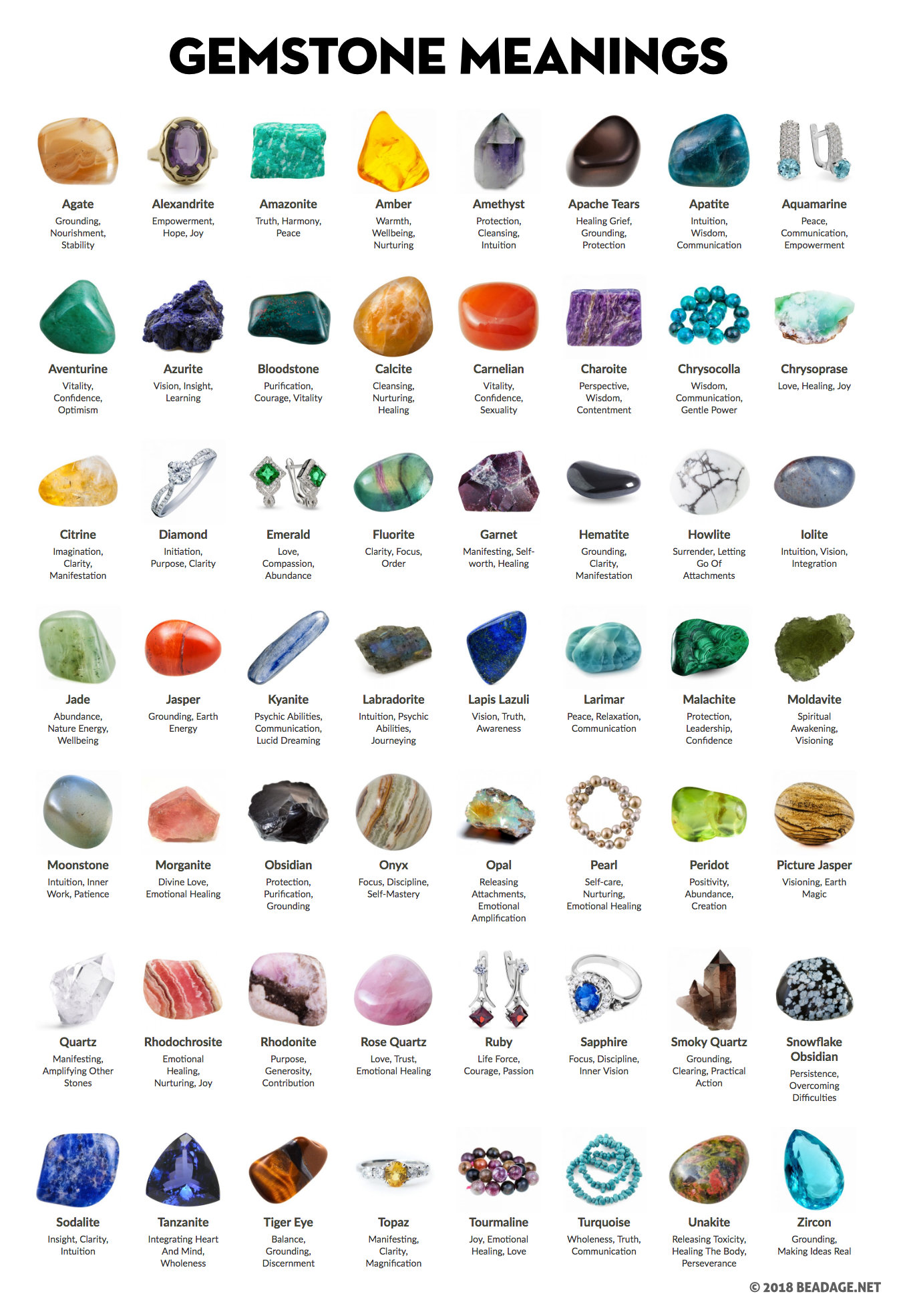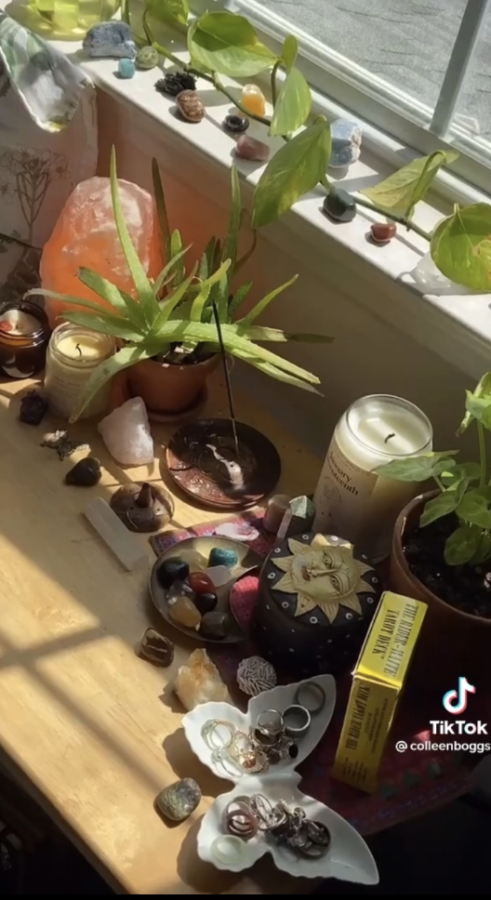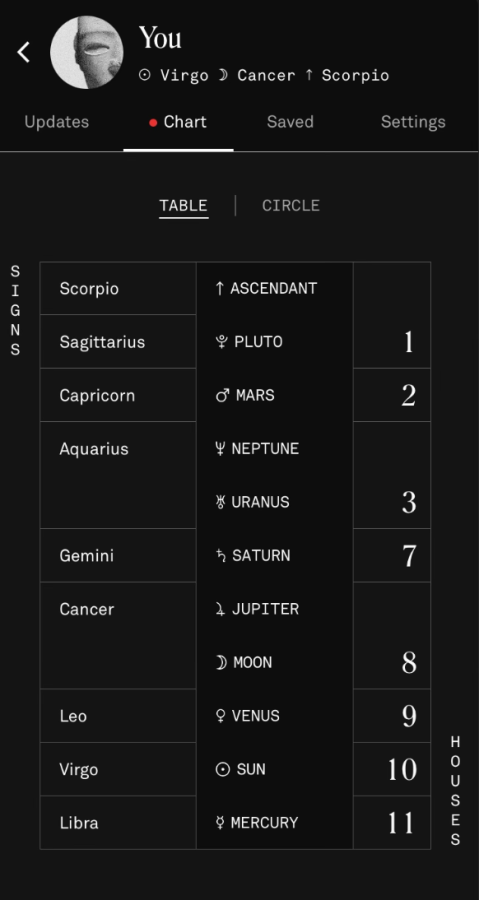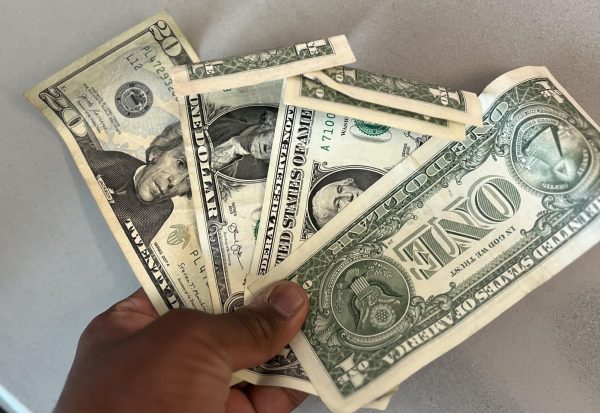Op-Ed: Manifesting optimism through spirituality
An assortment of tarot cards and crystals on a desk with various other spiritual accessories.
I am nearly certain that every passing grade I have ever gotten in AP Physics is caused by my cherished piece of Citrine I keep in my pocket every test day. But of course, this probably isn’t true and a rock with supposed academic and memory benefits isn’t the reason why I could differentiate between centripetal acceleration or force. Nevertheless, I believe the principle behind it was truly the make or break.
Nowadays, spiritual practices such as astrology readings, tarot cards, and crystal manifestations have become all the rage on various social media platforms, however, there are strong judgments that these trends are merely frivolous and feminine with no real implications. While the question of whether stars, rocks, or paper actually have mystical abilities is debatable, the mental impacts of believing in them are not and can genuinely bring partakers of these practices positive energy and affirmations to their life.
With TikTok currently dominating social media, the popularization of trends like “#WitchTok” have rocket launched spiritual beliefs into the lives of youth through many mediums, all of which have significant socio-cultural histories. Stanford researchers have analyzed the origins of such ideas saying that “People had this hunger to have something physical that embodies faith and spirituality,” explaining how certain objects came to carry such significance. The popularity of crystals in specific have grown drastically in detail and interpretation with dozens of varieties that each help in different fields of energy. This is seen in more famous stones like Rose Quartz symbolizing love and nurturing relationships, Amethyst providing self-healing properties of peace and intuition, and Garnet fortifying courage and strength.

Additionally, apps like Costar present a perfect example of media-popularized spirituality as it utilizes AI generated astrological information to provide users daily readings, along with more holistic predictions for personalized lives. Predictions, known as “horoscopes”, are curated by artificial intelligence that provide deep, relatable advice that tends to always hit a bit too close to home, encompassing relationships in romance, friendships, and even family, using phrases like “It’s going to be OK” and “You can break a rule if you have to.” Even with the spirituality community not With the processes of learning how to read aesthetically-pleasing tarot cards or hyper categorizing oneself based on constellations providing not only an explanation for the entirety of one’s life, but entertainment and indulgence in believing in the supernatural, similar to religion, with lower stakes and investment, there is no doubt it has gained a massive cult following.
Despite how counterintuitive these principles seem to harsh reality, spirituality and its presence on social media has been largely labeled as a pseudoscience, as they have inadvertently manifested (no pun intended) net positive results for many participants. In fact, spiritual alternatives have largely replaced the role religion would play for millennials and other youth, creating an environment of self reassurance and validation, as well as an otherworldly consolation for better future and fortune. Psychologically, this makes sense, even if just by placebo effect. Weeks of repetition of self-affirmations like encouraging yourself to meet new friends or ignoring the judgements of haters, would lead to some sort of genuine belief in self-love. The simpler practices of spirituality are commonplace within high school environments with students of CVHS being big time followers of such practices, through collection of crystals to imbue hopes and desires into and astrological readings to help get oneself through harder days. No matter the intricate procedures of cleansing crystals through the flames of organic wax candles or identifying a one in a million series of drawn cards, just channeling positive energy through a physical object can go great lengths for optimism and confidence, especially for CVHS’s constantly stressed environment—where every small notion of hope matters.
Even if we someday discover that spirituality is entirely superficial, currently, for the average student, that doesn’t matter. Instead, the pathway it brings for optimism in the dark times of high school are a necessary relief that I’d encourage all to try.
Your donation will support the student journalists of Carnegie Vanguard High School. Your contribution will allow us to cover our annual website hosting costs and fund field trips, competition fees, and equipment. We appreciate your support!

Cindy Cui is a senior at CVHS. In her free time, she enjoys cooking for her friends and family. On the weekends, she also enjoys playing tennis at night...








